Hitches and Towing 101
| CHAPTER CONTENTS | |
| 1. Introduction to Towing | 7. Brake Controls |
| 2. Towing Components | 8. Hitch Installation |
| 3. Types of Hitches | 9. Hooking Up |
| 4. Determining Tow Capacity | 10. Tow Bars/Dinghy Towing |
| 5. Selecting Your Hitch | 11. Towing Safety |
| 6. Wiring/Electrical | 12. Preparing Your Tow Vehicle |
Chapter 7
- Brake Controls
Most trucks,
vans, SUVs and RVs made since the mid-1990s are set up to use an electronic
trailer brake controller. These vehicles include a factory-installed "quick
plug" under the dash that connects with a standard brake controller. Many pickup
trucks made in the last 5 years even include a brake controller built in to the
dashboard, and absolutely no installation is required.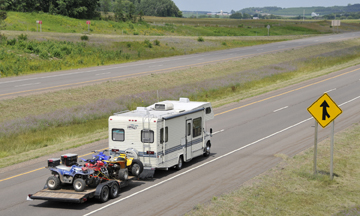
But
even if you have to splice into your vehicle's wiring to install a brake
controller, the process is not as difficult as you might think. Brake
controllers work on very simple principles, and once you understand what they do
and how to use them, you'll be very glad to have one.
About
Trailer Brakes
Most recreational trailers use electric brakes.
The exceptions are generally rental car-hauling trailers, which use "surge"
brakes and some large fifth wheels, which use air brakes. You can buy travel
trailers and car haulers with surge brakes, but they are less common than
electric. All types of trailer brakes generally use drum brakes, but some are
starting to use discs as well. The differences between brake designs are
significant.
Surge brakes are hydraulic, and use the trailer's natural
momentum to actuate the brakes. When you step on the brake in your tow vehicle
and slow down, the trailer pushes against the hitch and presses a hydraulic
cylinder. The more you slow down the vehicle, the more pressure on the trailer
brakes. When they are adjusted properly, surge brakes are smooth and easy to
work with. The downside is that you cannot separately actuate the trailer brakes
if the trailer is swaying.
Air brakes use compressed air to actuate the
brakes, and they require extensive additions to the tow vehicle, including
compressors and valves to control the air pressure and flow. Since these are
quite rare in recreational towing, air brakes are not covered in this series.
Electric brakes are more simple than surge brakes, but they require a
brake controller in the cabin of the tow vehicle. Electric brakes use
electromagnets to actuate the drum brakes, and you control the electricity to
the brakes with the brake controller and the brake light circuit on your
vehicle. Electric brakes work very well when adjusted properly, and you can also
reach over with your hand and use the brake controller to apply a small amount
of braking force if the trailer begins swaying. That's handy when descending
hills, in high winds, and when you're being passed by large
18-wheelers.
About Trailer Brake
Controllers
Trailer brake controllers are small boxes that
generally have just a few controls. There may be sliders or wheels for
sensitivity and gain, and there's almost always a slider to allow you to
activate the trailer brakes without stepping on the tow vehicle brakes. 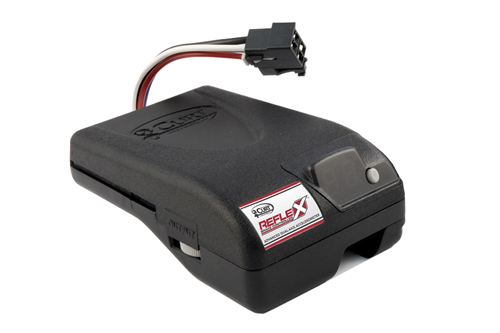
Figure
7-1: Trailer brake controller
The Sensitivity adjustment
may be automatic or it may be manual. This adjustment allows the brake
controller to activate the trailer brakes any time it senses your tow vehicle
slowing down. This prevents your trailer from pushing too hard against the hitch
and jackknifing.
The output (gain) adjustment simply modulates the
amount of electricity sent to the brakes. This adjusts the amount of braking
force applied. Heavier loads require more gain to generate more braking force,
but if you use too much gain, you'll lock up your trailer tires every time you
step on the brakes.
The activation slider (or manual control
lever) delivers some electricity to the brakes, and you use it when setting
up the controller of if the trailer begins to sway. Applying just a bit of
trailer brake is generally enough to stop the sway and pull the trailer back in
solidly behind your vehicle.
Wiring for Trailer
Brakes
If your truck, van, RV, or SUV was made after the mid-90s
and if it came from the factory with a Class III or better towing hitch
installed, chances are that it also has a quick plug under the dash for a brake
controller. A "pigtail" connector might also have been included in the glovebox.
If that's the case, you simply need to use the standard plug or use the pigtail
connector to wire into the vehicle plug, then mount your brake controller
somewhere on your dashboard. Generally, controllers are installed near the
driver's right or left knee.
Figure
7-2: Some of the styles of brake connector quick plug to fit different
vehicles
If your vehicle is not prepared with a quick plug,
you'll need to tap into your brake light wiring. Find the brake light switch -
it may be mechanical and attached to the pedal, or it may be hydraulic and
somewhere in the engine bay. Wherever it is, you'll need to run a 12 volt power
wire, a ground wire, and a brake light wire to the controller, and then a wire
from the controller back to your vehicle's trailer wiring
connector.
Wiring in a brake controller is generally too complicated and
important a job for an amateur. If you're confident of your skills, you can do
it, but it's generally better to take this job to a professional if you haven't
done it before.
Finally, if you're lucky enough to have a brand new truck
with a brake controller installed in your dash by the factory, you're all set
and your controller should work with all standard electric trailer brakes.
About Breakaway Brakes
Many larger trailers are
required by law to use a breakaway system with the brakes. This safety device
protects you and people around you in the worst case scenario. If your trailer
comes loose from your vehicle, it's an unpredictable and highly dangerous
situation. 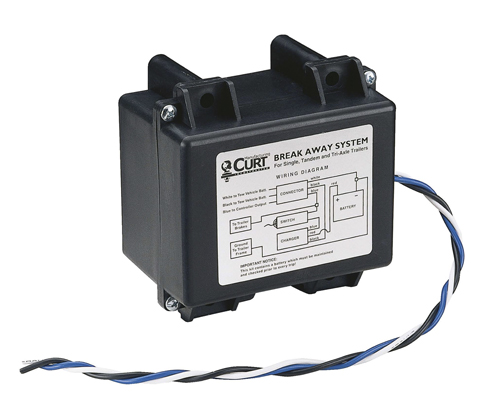
Figure 7-3: Breakaway battery case with wiring
diagram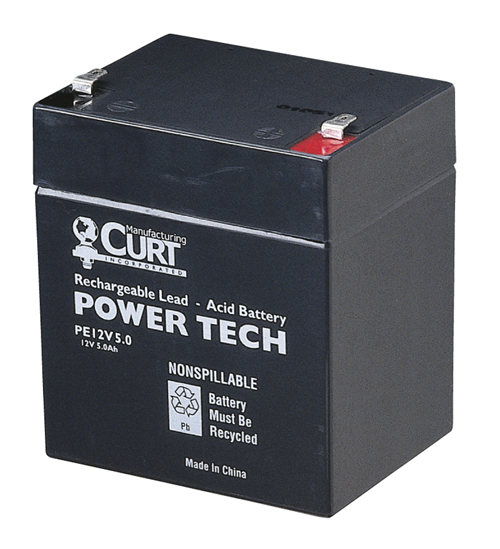
Figure
7-4: Breakaway battery
A breakaway brake is simply a small
battery on your trailer and a switch connected to a strong cable. You attach the
cable to your vehicle's trailer hitch and if your trailer comes loose and your
safety chains fail, the trailer will pull the cable as it breaks free of your
vehicle. The switch will activate the battery and apply the trailer brakes
strongly. 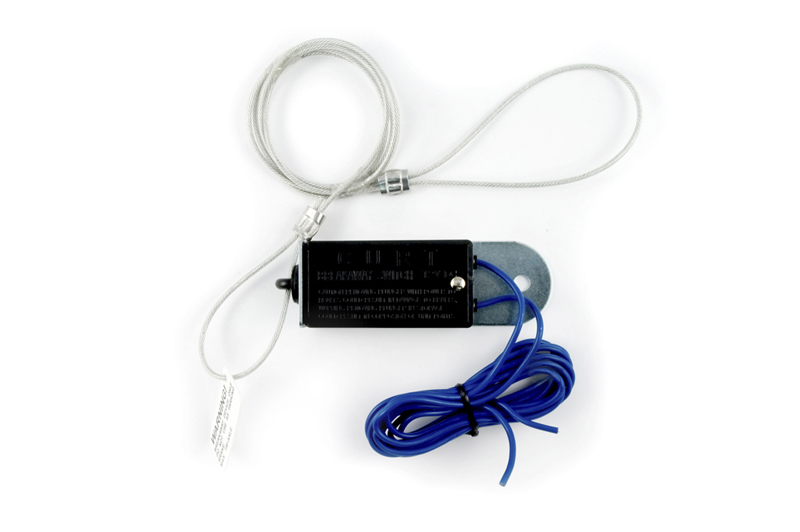
Figure
7-5: Breakaway switch and cable
If your trailer has a
breakaway system, maintenance is simple. Check the breakaway battery regularly
to make sure it is charged, (most high quality systems include a
charger) and check the breakaway cable to make sure it's in good condition.
Always connect the breakaway cable to your vehicle securely. You can test the
breakaway system by pulling the cable. Your trailer brakes should immediately
activate and lock up the tires. To disengage the breakaway, simply replace the
breakaway cable in the switch.
Trailer Brake
Service
Like any other brakes, trailer brakes require regular
service. The heavier the loads you tow, the more frequently you should inspect
and adjust your trailer brakes. Every 6 months is a good interval for most
recreational trailers.
Because your trailer brakes are almost always
drum brakes, you generally have to use a flat screwdriver or brake adjustment
tool to perform the adjustment. Follow the directions in your trailer's brake
handbook (it's usually a separate document), but most brakes use a "star wheel"
adjuster and have you tighten the brakes until the wheel does not turn, then
back off a given number of "clicks" until the wheel turns freely. Over time, you
may need to replace the electromagnets as well, or replace the brake shoes and
drums, but most trailer brakes are gently used and will last a long
time.
If you're not confident of your ability to inspect and adjust your
brakes properly, take it to a professional trailer shop. They'll have you in and
out quickly and it doesn't cost much to have this work done.
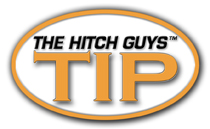 If
you have the trailer shop adjust your brakes, have them lubricate and
tighten your wheel bearings and inspect your tires and valve stems at the
same time. If
you have the trailer shop adjust your brakes, have them lubricate and
tighten your wheel bearings and inspect your tires and valve stems at the
same time. |
| << Back to Chapter 6 | Go to Chapter 8 >> |




